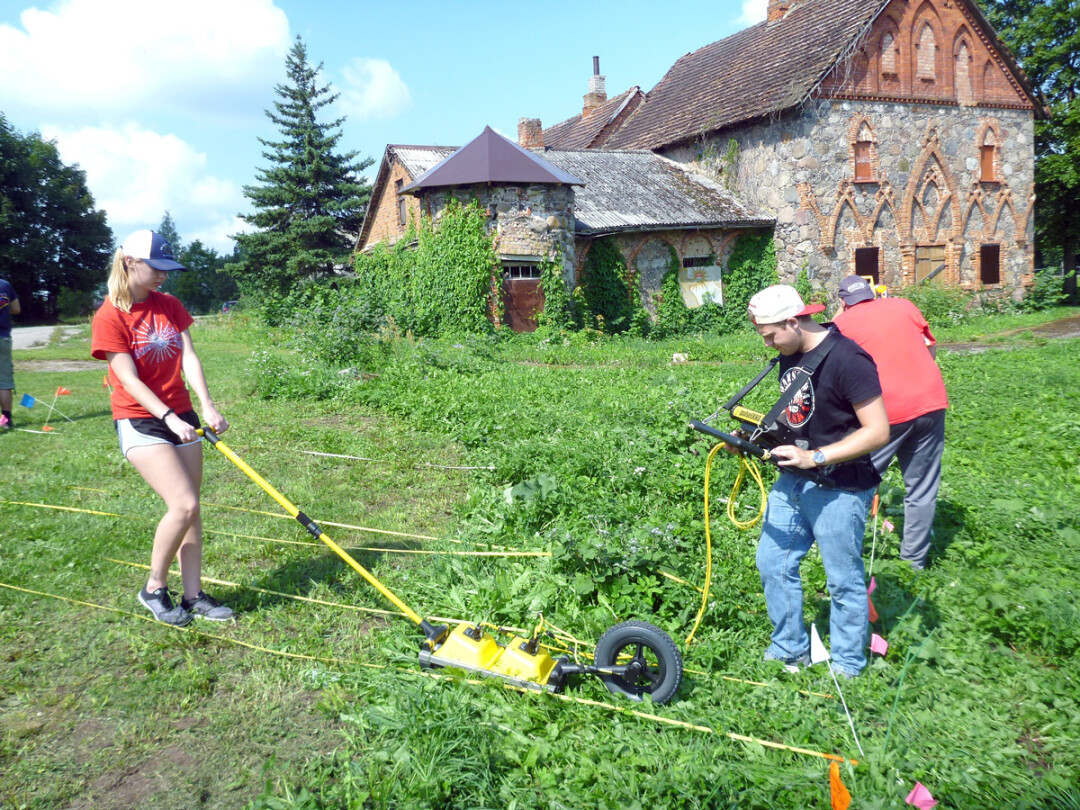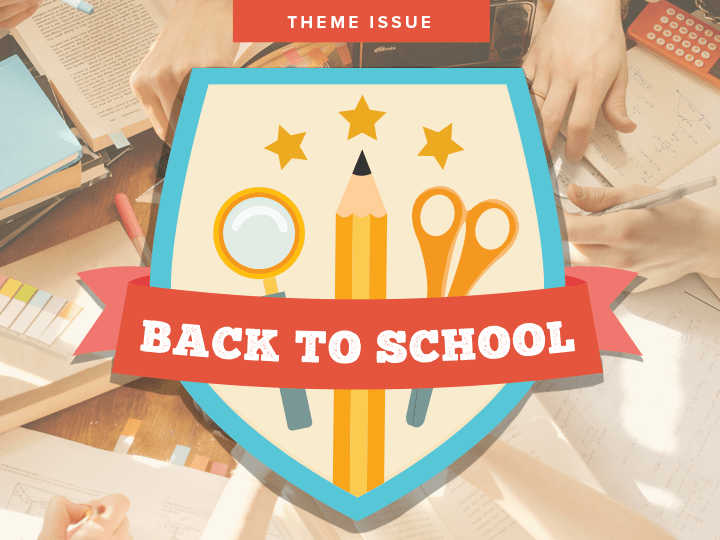Underground Exploration
UWEC students uncover history on summer research trip

For a team of UW-Eau Claire students this summer, ground-breaking research meant literal ground-breaking – or at least ground-penetrating – in a quest to uncover mysteries thousands of miles from home. Under the leadership of Dr. Harry Jol, a professor of geography, four Blugolds spent their summer vacation on a once-in-a-lifetime historical and geographical quest in Lithuania.
“It’s a totally transformative educational experience,” explained Jol, who for the last four summers has led research trips to Lithuania, a small former Soviet bloc nation on the Baltic coast. The project brought together the UWEC team with professors and students from Duquesne University in Pittsburgh and the University of Hartford in Connecticut, as well as with Lithuanian experts and officials from the the Israel Antiquities Authority. The UWEC students make use of ground-penetrating radar (GPR), a technology that allows users to peer beneath the surface and identify spots to excavate.
Much of the exploration has focused on Lithuania’s Jewish history. In past years, Jol’s teams helped find the site of the Great Synagogue in the capital city, Vilnius, as well as locate an escape tunnel that Holocaust survivors used to flee from a mass execution site after Nazi Germany invaded Lithuania during World War II. The latter discovery was featured in a 2017 episode of the PBS series Nova.
Important discoveries were made this year as well. The team continued to explore the site of the Great Synagogue, which was burned by the Nazis during the war, then demolished by the Soviets after it. Researchers located the synagogue’s outer wall as well as its bimah – the raised platform from which the Torah was read. Elsewhere, the team’s GPR helped locate the burial site of Matilda Olkin, a young Jewish poet and diarist who is known as “the Anne Frank of Lithuania.”
As during previous summers, the research received worldwide media attention, with scores of articles published by media outlets in Lithuania, Israel, the U.S., and beyond. This November, a portion of the project will be featured in Smithsonian magazine.
Sam Schneider, a UWEC senior majoring in geospacial analysis and technology, said he enjoyed the interdisciplinary nature of the research project. For instance, he explained, it helped him understand the close relationship between geography and archaeology. He also appreciated learning to use new technologies as well as working alongside other American students and researchers from other countries.
“One of the best things was meeting people from all over the world who were interested in this,” said Schneider, a native of Houston, Minnesota, who will graduate next year.
One of the unique aspects of the program is that it is open to more than just geography students. Madeline Fuerstenberg, an incoming UWEC sophomore from Deerfield, is a journalism major who said she has always wanted to write for National Geographic. She said the experience in Lithuania taught her to be willing to step outside of her comfort zone. “It was definitely a challenge to acclimate myself to the technical terminologies and tools of our research, as I have not taken many hard science courses,” she said. “But it was the perfect learning experience, because I had no choice but to learn and adapt.”
The close encounter with Lithuania’s dark history also left an impact. “I suppose the main thing I’ve taken away from this experience is that there will always be more for us to learn and discover about the Holocaust,” Fuerstenberg said. “No matter how hard we might try, I don’t think we’ll ever be able to fully comprehend the complexities and horrors behind that event.”
Jol said the research – which often is informed by the testimony of eyewitnesses and survivors of the Nazi era – can help bring closure to long-past events. The UWEC team spent about 10 days working on Holocaust sites, five days exploring Neolithic sites and 13th century hill forts, and the remainder of their times along the Baltic Sea, studying coastal dunes.
The project encompasses more than the on-site research. Before they disembark, the students help Jol write proposals and do background research. After they return to the United States, they collate and interpret the data. In the past, students have made presentations about their research at professional conferences; For example, earlier this year, two students who took park in the project in 2017 gave a presentation at an international GPR conference in Switzerland.
In addition to giving them new perspectives on history and culture, high-impact research experiences like this one can help Blugolds once they enter the job market.
“When their résumé goes across the table, these are the experiences that are highlighted,” Jol said.

